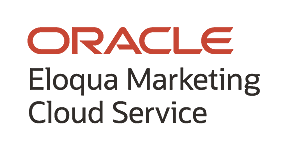Harvard Business Review highlighted the increasing popularity of marketing automation platforms and the pitfalls many early adopters have faced by purchasing the wrong solution. As a growth example, the HBR editors pointed out that this $122 billion industry enjoyed annual growth of 22 percent. Moreover, 70 percent of CEOs say they plan to increase their marketing automation investment.
As a caution, they offered examples of several companies that used a bottom-up approach to selecting marketing platforms. In other words, they bought into a solution without analyzing the problems it might solve for their unique organizations. In time, these businesses scrapped the tools because they did not integrate well with existing products or business processes.
How Oracle Revolutionized Their Marketing Technology
As a lesson to other businesses, HBR also demonstrated Oracle’s successful, top-down approach to revolutionizing their marketing technology when they switched from focusing on marketing products to marketing services. At the time, Oracle’s analysis uncovered disparate marketing and sales silos with little integration. This resulted in poor conversions and little alignment between various marketing and sales teams.
Rather than a bottom-up approach to automated marketing, Oracle took a practical top-down approach. HBR called this system the Three Ds:
- Deconstruct: Deconstruction starts with breaking customer journeys into their main phases. Then, attach goals and metrics to each stage. For example, inbound marketing might make customers aware of the brand, so website traffic or surveys might measure effectiveness. At the end of the path, companies might measure customer satisfaction by looking at the number of returns or social media mentions.
- Decompose: At this point, marketers should develop tactics to achieve their goals for each stage. These tactics offer opportunities for automation. For example, inbound marketing may help increase awareness, so platforms that can help automate social posts or email lists may provide reasonable solutions.
- Design: Finally, it’s time to look for solutions to existing problems or enhance current solutions. The team should consider platforms in the context of integrating with the software and processes they plan to keep.
Oracle also invested in transformation with a commitment from senior management and centralized alignment of sales and marketing functions. They also initially focused on their most enthusiastic supporters and coaxed some less passionate teams. When they met resistance, they even took the step of reassigning the duties of reluctant employees.
Ultimately, this enterprise enjoyed higher average sales, better conversions, shorter marketing cycles, and recognition for having one of the world’s most efficient marketing stacks. In addition, they increased the number of marketing and sales interactions from two million to 1.5 billion. As a result, other organizations can follow this successful implementation strategy to realize their own goals.
What Are Marketing Automation Platforms?
Marketing automation platforms offer technology to handle marketing tasks. For example, they might automate such repetitive marketing tasks as posting on social media or blogs, sending emails, and even managing advertising campaigns.
Not only can this marketing software improve efficiency by reducing repetitive manual work, but it can also offer a personalized experience to prospects and customers at a scale that human teams could never manage.
Even better, these platforms offer tracking, analytics, and testing platforms. Marketers can use these platforms to measure effectiveness, produce reports for management, and, most of all, serve customers better and faster. Of course, these platforms should integrate with the company’s other sales and marketing systems and processes, like a CRM or ad platform.
Who Benefits From Marketing Automation Platforms?
Some business leaders think that only the marketing department benefits from marketing automation. However, by providing better information about the activities they support, marketing automation platforms also help executives make informed decisions to benefit the entire company.
Martech Advisor pointed out that various departments in thriving companies cannot afford to operate like isolated islands these days. Good automation software may benefit businesses by supporting greater alignment between multiple aspects of the business. For example, they can help marketing and sales work together to achieve common goals.
The business areas that may enjoy the most significant benefits from automated marketing tools include:
- Marketing: The most basic benefits to marketing departments might include relief from manual tasks, enforced adherence to marketing plans, and robust metrics. By improving productivity and analytics, these tools may also allow marketers to reach wider audiences.
- Sales: Good tools can help sales understand consumer behavior and motivations to engage and communicate better. Some software will even score leads to help sales prioritize high-quality prospects. Messaging tools will help sales departments keep in touch with prospects and potential candidates for upsells.
- Customer service departments can also use marketing automation platforms to reach customers through messages and surveys. They can also uncover information sales and marketing can use to improve their messaging, products, or services.
- Human resources: Today’s human resource departments often consider employees their customers. In that way, a human resources department can use marketing automation for recruiting, employee satisfaction surveys, and more.
What Can Marketing Automation Platforms Do?
Various marketing automation platforms offer different features but share common characteristics. For instance:
- Information storage: The platform will include a central store of customer information. Some examples of data sources might consist of signups for a subscription list, setting up website accounts, or messaging through social media. Platforms may also integrate with a CRM or other systems to retrieve and send information.
- Personalization and customization: The platform should personalize communications to customers using the information it stores or can access. It may also segment the audiences to customize communication further. For example, it could base segmentation on customer demographics or behavior.
- Task automation: Marketing automation software will automate specific manual tasks. For example, the software might automatically send newsletters or post to social sites on a schedule, respond to messages, or send alerts to responsible employees.
- Customer and prospect tracking: The software should also keep track of its actions and customer responses. For instance, email marketing platforms can track who opened a message, clicked a link, or responded to a social media post or advertisement.
Features of the Best Marketing Automation Platforms
Marketers can choose between so many marketing automation platforms that selecting one may offer a challenge. In addition, some products focus on just one type of marketing, like email or social networking, while others premise a comprehensive solution for all marketing activities. This could even include offline touchpoints.
The best solution may depend on existing software, marketing goals, budgets, and individual preferences. However, it should still help to keep certain features in mind when comparing platforms. Some examples of categories of helpful attributes include:
- Tracking: The software might track visitors to a business site, content performance, customer or prospect activities, and conversions.
- Lead nurturing: Drip marketing will ensure customers remember a business. Also, lead scoring and assignment features to help sales teams focus on the most productive prospects.
- Hosting and developing forms and landing pages: Some marketing platforms let users create and even keep landing pages and forms. Many even allow the development of dynamic content that will display customized messages, depending upon the customer’s profile or behavior.
- Segmenting lists: Marketers may want to use various criteria to segment audiences to distribute somewhat different messages.
- Integrating with other software: From a CRM to a messaging app to an eCommerce site, integration with other tools will further reduce manual effort, reduce the chance of errors, and improve effectiveness.
- Personalizing messages: The software should use customer data, segmentation, and sometimes even artificial intelligence to send the right message at the best time.
Pros and Cons of Marketing Automation Software
Marketing automation benefits companies by improving productivity and ensuring adherence to a marketing plan. While nobody should promise a set-and-forget marketing tool, this software can save time and enforce guidelines set in a marketing plan.
In turn, marketers should find time to engage with additional channels, focus more on high-level strategies than manual labor, and enjoy better information from tests and active campaigns. Good automation tools also allow for easy collaboration and alignment of various departments.
On the downside, getting started with marketing automation takes an investment of both money and time. Businesses may not enjoy productivity gains or maximize investments until employees have worked through a learning curve. Some critics also express concerns that some marketers use their new marketing automation tools too enthusiastically. Rather than satisfying customers, misuse of even the best tools can result in over-messaging.











